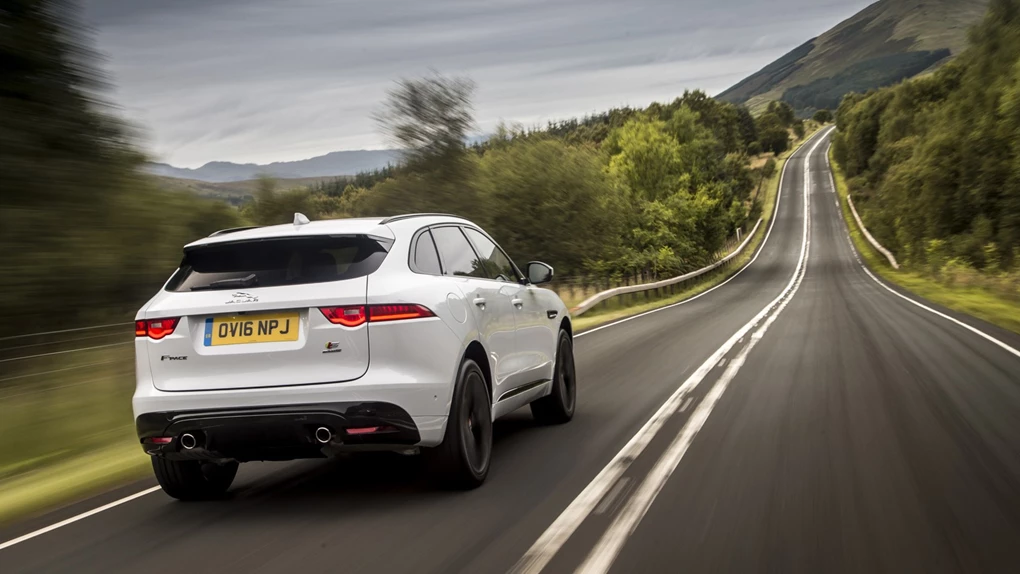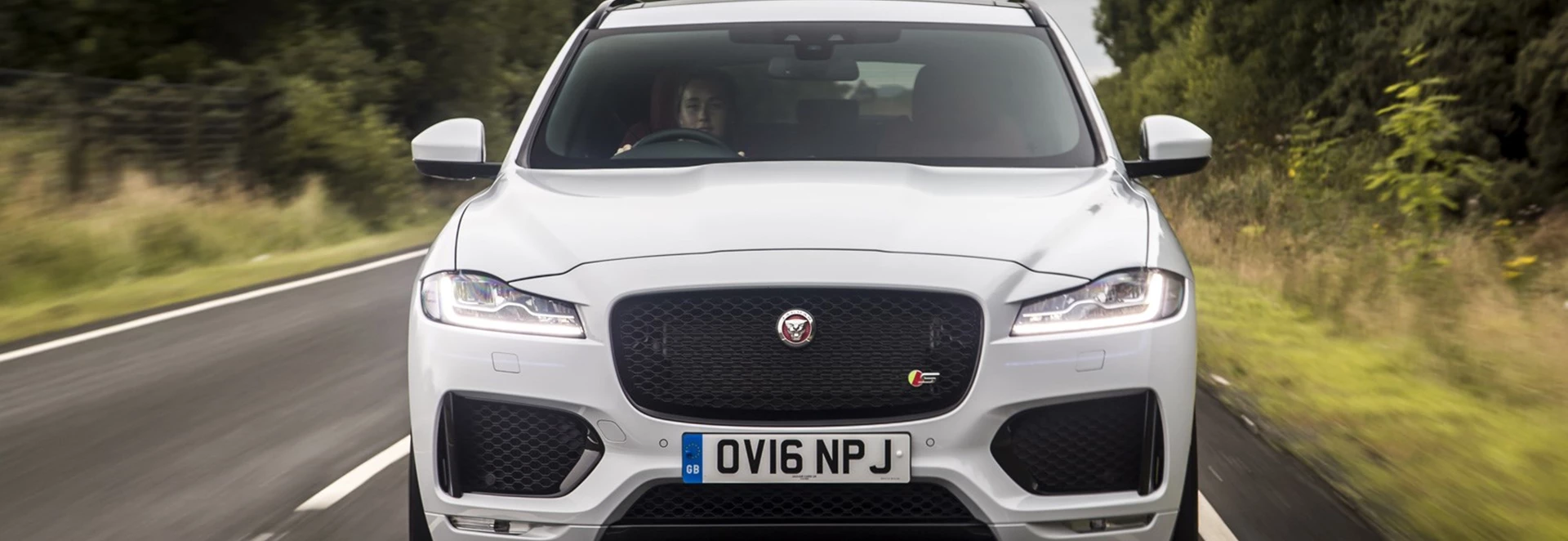It’s Jaguar’s first SUV, and it’s a cracker.
Introduction
The Jaguar F-PACE is the first SUV in the manufacturer’s eight-decade history and one of the most important Jags in recent years, billed as “the ultimate practical sports car”.
In essence, F-PACE has been intended from the start as a performance car you can take the kids to school in; a sports car made practical rather than a big and practical SUV made to be sporty.
Jaguar claims that it behaves like a blend of what all its closest competitors do best, so that means the handling of the Porsche Macan meets the practicality of the Audi Q5 and the relatively cost-effective pricing of BMW’s X4.
What’s certainly for sure is that the F-PACE is in a league of its own in terms of appearance. Styled by Jaguar’s chief designer Ian Callum, there’s little doubt that it’s probably the best looking car of its kind around right now, and there’s a lot more that’s right about it below the surface too.
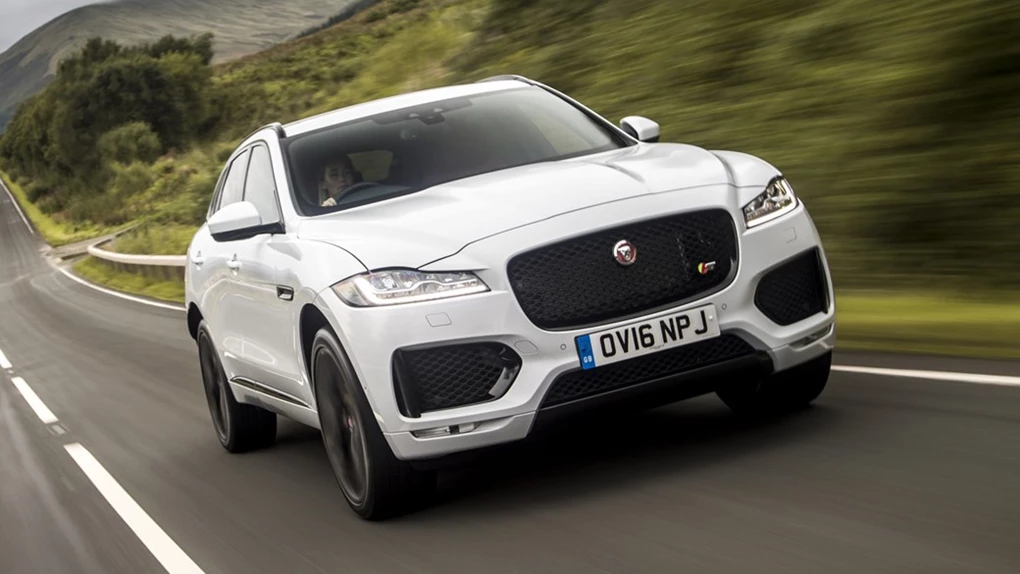
Performance
Three engine options are available in the F-PACE, with the major talking point being the same 3.0-litre supercharged petrol V6 engine that features in the F-TYPE sports car.
Sitting at the top of the range, the supercharged V6 delivers 375bhp can blast its way to 62mph from a standing start in just 5.1 seconds, before hitting a top speed of 155mph. There’s also a 296bhp 3.0-litre diesel engine, which does the 0-62mph sprint in 6.2 seconds, with a 140mph top speed.
However, the engine that we tested here is the 178bhp 2.0-litre diesel engine, which sits as the entry point to the range but which Jaguar expects will be the best selling of all of them, though there’s naturally plenty of interest in the petrol V6 too.
Entry models come with rear-wheel drive and a manual gearbox as standard, but you can upgrade to four-wheel drive and an automatic gearbox for a bit more. The more powerful engines, meanwhile, are available exclusively with the auto and with all four wheels driven.
As it’s significantly less powerful than the big 3.0-litre options, the 178bhp diesel is also significantly less rapid, and 0-62mph with this engine takes a more leisurely 8.7 seconds. It’s not that bad and it picks up relatively well when you put your foot down, but we do feel as though it slightly breaks faith with the F-PACE’s sporting design.
It’s much the same problem that blights the XF saloon with the same engine and it’s really a bit disappointing compared to the bigger engines, feeling not very torquey and sounding a bit nasal when it’s high up in the rev range.
Still, for everyday driving it’s absolutely fit for purpose and will also pay dividends when it comes to insurance, taxation and running costs. As well as that, it’s relatively refined at cruising speeds and so will appeal to buyers who like the idea of the F-PACE but who don’t necessarily want knock-your-socks-off performance.
Ride and Handling
On paper, the F-PACE looks like a match made in performance car heaven with the same lightweight aluminium architecture that underpins most of Jag’s recent range, which makes it the lightest car in its class and 130kg less than Porsche’s Macan.
It’s also got 50/50 weight distribution, a steering and suspension setup that’s derived from the F-TYPE and a slippery 0.34 drag coefficient, so what’s it like when you’ve clambered up into the cabin and hit the ignition?
Simply put, it’s a Jaguar. All the classic hallmarks are there, from the classy feel and agility, and the F-PACE feels every bit as lively, dynamic and keen as Jaguar says it is. Do note that it’s worthwhile upgrading to the adaptive suspension if you really want to get the most out of it though, as the standard suspension is prone to feeling bouncy on the road and a bit floaty over crests.
There’s loads of grip in the four-wheel drive model we drove though, and the F-PACE at all times feels responsive and planted, even when you’re chucking it quite hard. The steering is direct and very well weighted, and even if it can feel a bit spongy there’s never the feeling of disconnect between your inputs and the front wheels like in many electronic steering systems.
It’s even surprisingly capable off-road too, and comes with the same hill descent control function as Land Rovers to keep it steady and controlled over inclines and through boggy surfaces. We wouldn’t recommend you go mud-plugging in it too often though, particularly with the larger 22-inch alloy wheels as even the smaller 20-inchers make it feel crashy when you plow headlong across the ruts.
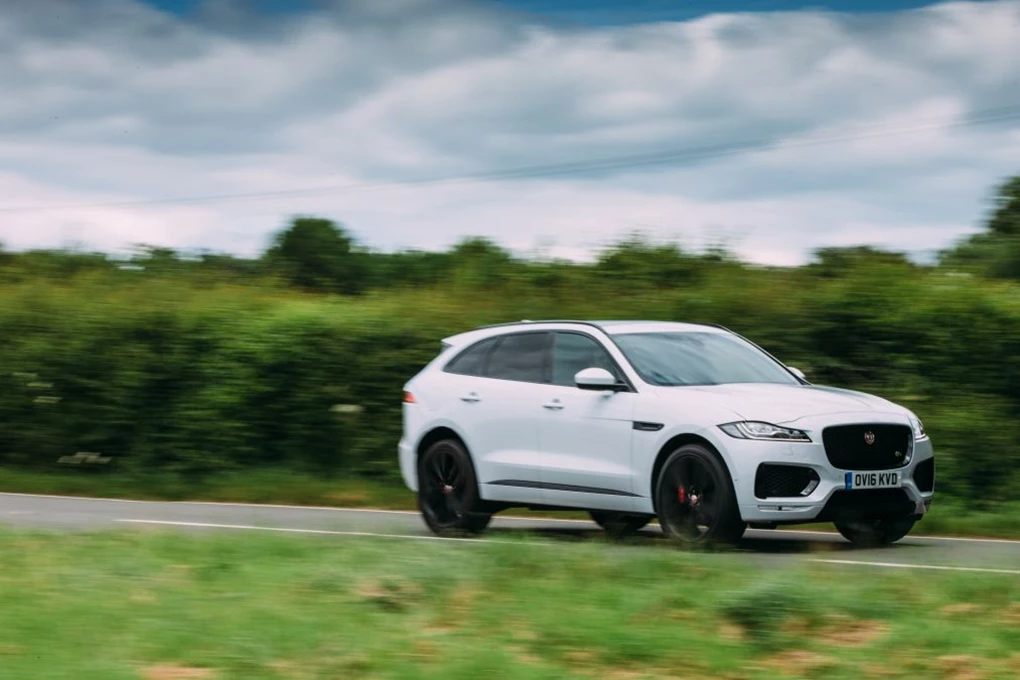
The ride and handling is lively, dynamic and keen. All the classic hallmarks are there, from the classy feel and agility, and the F-PACE feels every bit as lively, dynamic and keen as Jaguar says it is.
Did you know?
The Jaguar F-PACE holds the Guinness World Record for performing the largest ever loop-the-loop in a car at the 2015 International Motor Show in Frankfurt.
Interior And Equipment
So it’s got the driving boxes ticked, what about the interior? Well, it is a Jaguar after all, so that means a plush and upmarket cabin with swathes of leather and a well-appointed interior.
Whether or not it’s quite got a patch on some of its rivals is up for debate and some of the controls are a bit ergonomically questionable, but it’s plenty spacious both in the front and in the back, with a class-leading luggage capacity of 650 litres in the boot.
Four trim levels are available, with Prestige and Portfolio offering a more luxury-oriented fit and finish, while the R-Sport and the range-topping S models are decidedly more performance oriented.
Standard equipment is particularly comprehensive, with even the cheapest model getting sat-nav and in car Wi-Fi, along with an electrically-operated power tailgate, parking sensors and Jaguar’s fantastically responsive InControl infotainment system.
Opting for higher trims adds on bells and whistles like a panoramic roof, larger alloy wheels and upgraded sound systems, along with sports seats, xenon headlights and the more advanced InControl Touch Pro system.
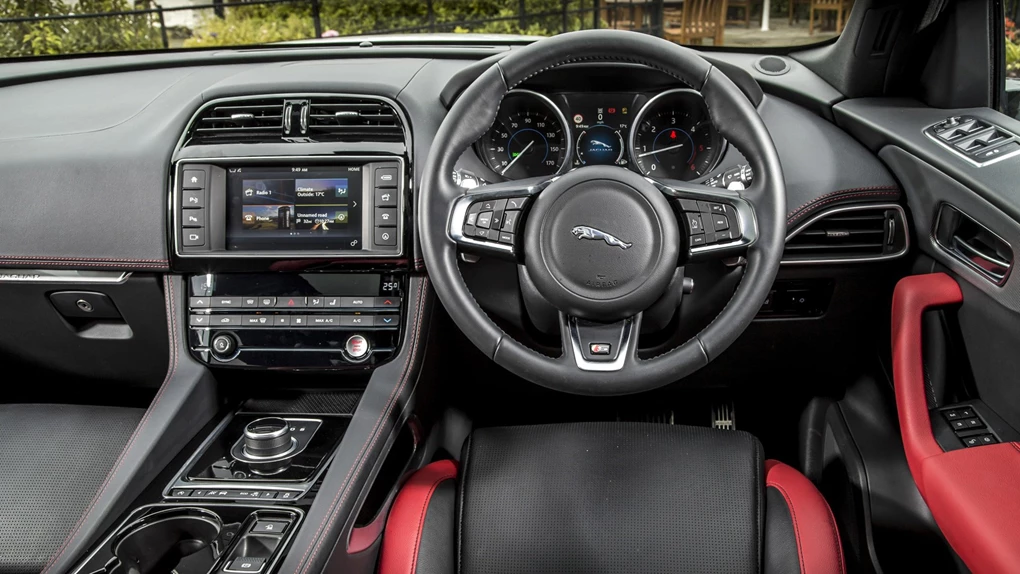
Cost
Priced from £34,170 for the entry-level Prestige trim, the F-PACE is well positioned economically compared against its main rivals. It’s a little bit more expensive than the X4, but is much cheaper than the Macan.
Some of the options can add up, however, with the difference between the basic F-PACE and the limited-run First Edition model clocking in at nearly £30,000. Still, it’s worthwhile considering that depending on engine choice the F-PACE’s fuel consumption can better virtually all of its competitors.
Although the 2.0-litre diesel mightn’t be the paciest of the F-PACE’s engines, its claimed fuel economy of up to 57.7mpg and relatively low 129g/km CO2 rating is better than its main rivals, even if you should expect a bit less than that in real-world use.
Of course, going for the more powerful options will also see that decrease dramatically, so if you’re interested in something like the petrol V6 do be prepared to pay a lot more in terms of both up front price and running costs.
The Jaguar F-PACE has an impressive fuel economy. Depending on engine choice the F-PACE’s fuel consumption can better virtually all of its competitors
Our Verdict
Jaguar specifically claims that the F-PACE is its most well-rounded model yet, and having driven it it’s hard to argue. It ticks all the boxes in terms of practicality, performance and stand-out looks, and deservedly lives up to its billing as a sports car made practical.
Of course, to get the most out of it you will have to choose the options right and some might find the 2.0-litre diesel a little underwhelming compared to the punchier 3.0-litre motors, but overall it’s talented, practical and well fitted. In short, it’s everything you’d expect from a Jaguar, just a bit bigger.
